26 April 2020
10 Japanese Loanwords We Use in English
(This article was reviewed and edited by native Japanese speakers to ensure accuracy.)
English speakers tend to look at Japanese as an ancient and arduous language, which is far away from other idioms. However, Japanese words are everywhere in the English language, and we commonly (and fluently) use them as part of our daily conversations.
The best starting point for learning Japanese is to identify these loan words and use them as a base to start building your fluency.
Here, you will find 10 Japanese words that we use in English habitually. It is interesting to see how often the pronunciation of some words may change. Besides, the original Japanese meaning can sometimes differ from the adapted English version. Understanding these differences can be one of the keys to master the Japanese language.
1. Hentai
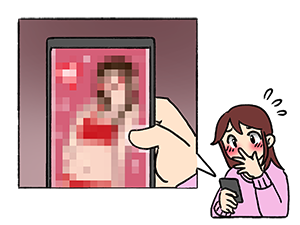
Japanese: 変態 (hiragana: へんたい)
Kanji details: 変 (へん) unusual, strange + 態 (たい) attitude, condition, appearance
In the English language, it is mainly used to describe pornographic cartoons, especially of Japanese origin or drawn in a Japanese style.
In everyday language, the term primarily refers to a person with pervasive sexual habits or who expresses his libido in an inappropriate way.
There are also more technical uses. In biology and physics terminology, it describes the act of transformation, typical of anthropoids such as insects and crustaceans.
The word originally appeared in the Meiji era (1868 – 1912) to describe abnormal or unusual traits, including paranormal powers and psychological disorders.
お前、見かけによらず変態だな!
Omae, mikake ni yorazu hentai da na!
Despite appearances, you are a pervert!
2. Karaoke


Japanese: カラオケ
Kanji details: N/A (This word is written in Katakana.)
In the Japanese language, karaoke is the clipped compound of 空 (kara, empty) and オーケストラ (ōkesutora, orchestra). The literal meaning of “empty orchestra” refers to a piece of music without vocals
Karaoke first became popular in English in 1979. Outside Japan, amateur singers usually perform in a common area at bars and pubs, in front of an audience that includes strangers.
In Japan, “karaoke boxes” are common places to enjoy karaoke. They offer private karaoke rooms where people can sing in front of their friends only.
Moreover, different versions of karaoke devices, such as wankara (ワンカラ, “solo karaoke”) are available in Japan. This is a smaller karaoke box which serves only a single person, with no audience.
カラオケに行かない?
Karaoke ni ikanai?
Do you want to go to karaoke?
3. Tsunami
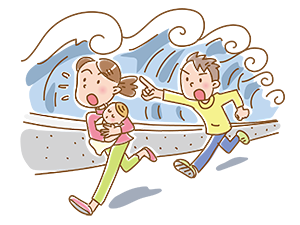

Japanese: 津波 (hiragana: つなみ)
Kanji details: 津 (つ) port, harbour + 波 (なみ) waves
A tsunami is a gigantic sea wave produced by a seaquake or undersea volcanic eruption. The word refers to a large-scale wave propagation phenomenon, that occurs in oceans due to sudden changes caused by earthquakes, volcanic activity and mountain collapse.
津波が来ますので注意してください。
Tsunami ga kimasu node chūishite kudasai.
A tsunami is coming, so please be careful.
4. Sushi
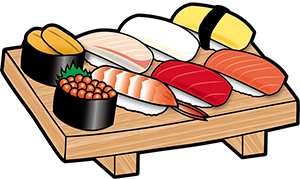

Japanese: 寿司 (hiragana: すし)
Kanji details: 寿 (す) longevity, congratulations + 波 (司) official
Undoubtedly, sushi is the quintessence of Japanese food for those living outside this country. It is prepared with vinegar rice and a variety of ingredients, such as seafood.
The increasing popularity of this delicacy around the world has resulted in a wide variety of styles of sushi. This includes the use of ingredients which are not typically used in Japan, like cucumber, avocado and tropical fruits.
In Japan, when people talk about sushi, they usually refer to “nigiri” whereas in Western countries, people may think of “maki” when they talk about sushi.
寿司の具は何が好きですか。
Sushi no gu wa nani ga suki desu ka?
Which sushi ingredients do you prefer?
5. Karate
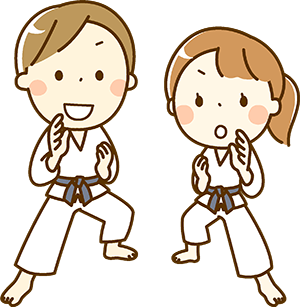

Japanese: 空手 (hiragana: からて)
Kanji details: 空 (から empty) + 手 (て) hand
Karate is a martial art featuring punching, kicking, knee and elbow strikes, and other open-hand techniques. It was introduced in Japan in the early 20th century and systematically taught after the Taishō era (1912–1926).
English-speakers began to use the word karate in the 1960s to refer to all striking based Asian martial arts. In Japan, karate refer to this specific from of martial art.
中学のときは空手部でした。
Chūgaku no toki wa karatebu deshita.
I used to be in a karate club when I was in junior high school.
6. Futon


Japanese: 布団 (hiragana: ふとん)
Kanji details: 布 (ふ) linen, cloth + 団 (とん) group, association
Futons are maybe one of the most emblematic elements of Japanese décor. This traditional bedding consists of a mattress and a duvet, which are pliable to be stored away in a closet when not in use.
What people call “futon” in the West is bigger, as they have the dimensions of a western mattress. Moreover, they are thicker, and they do not need to be aired regularly. In contrast, traditional Japanese mattresses (known as 敷き布団, shikibuto) must be aired in the sun frequently to prevent mould and to keep them free of mites.
In Japan, Western-style futon are simply known as ベット (beddo, bed) and generally not considered “futon”.
毎朝布団を片付けています。
Maiasa futon o katazuketeimasu.
Every morning, I put away my futon.
7. Emoji
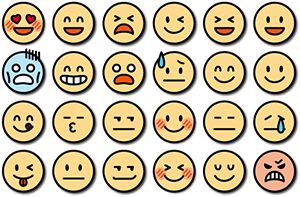

Japanese: 絵文字 (hiragana: えもじ)
Kanji details: 絵 (え) picture + 文 (も) decoration, figures + 字 (じ) character, letter
Emoji are smileys used in electronic messages and web pages. In Japan, the word emoji refers to Unicode pictograms, or typographic approximations, where a combination of letters and pictures is used to describe a word or a sentence. In different contexts, emoji can also describe a picture that replaces words or symbols (for example, a mark indicating an emergency exit).
Although numerous claims have been made to who invented the first emoji, Japan was the first country to widely adopt them in 1997. Their popularity increased worldwide in the 2010s after being introduced in several mobile operating systems. The word emoji itself derives from the Japanese terms for “pictogram”.
娘は絵文字をよく使う。
Musume wa emoji wo yoku tsukau.
My daughter often uses emoji.
8. Zen


Japanese: 禅 (hiragana: ぜん)
Kanji details: 禅 (ぜん) dhyāna (profound meditation), Buddhism
In the Japanese language, 禅宗 (ぜんしゅう, zenshū) refers to certain branches of the Mahayana Buddhism school. The Zen doctrine emphasises the use of meditation to achieve an intuitive illumination of the mind. To this end, rigorous self-restraint, constant meditation and in-depth insight into the nature of mind and things are essential.
Over the last centuries, the term zen has been adopted in Western countries, but with an entirely different meaning, which is instead not used in Japan. In the English language, zen is used more as slang for feeling peaceful and relaxed. When using the word zen, English-speakers refer to a state of inner peace that is not linked to Buddhism teachings. On the contrary, “being zen” is often associated with a minimalist or laid-back lifestyle.
禅は欧米でも人気があります。
Zen wa obei demo ninki ga arimasu.
Zen is popular also in Western countries.
9. Kombucha


Japanese: 昆布茶 (hiragana: こぶちゃ)
Kanji details: 昆 (こ) descendants, insect + 布 (ぶ) linen, cloth + 茶 (ちゃ) tea
Kombucha is a fermented, lightly alcoholic and effervescent, sweetened black or green tea. This beverage, consumed for its supposed health benefits, is believed to have originated in Manchuria.
In Japan, the term kombucha (commonly called kobucha) refers to kelp tea, which is made with powdered kombu, a type of edible kelp. In other words, it is an entirely different beverage. Linguists advocate that this may be a case of a misapplied loanword from Japanese. The correct Japanese kanji for fermented tea are 紅茶キノコ (kōcha kinoko, literally “red tea mushroom”).
昆布茶は欧米やオーストラリアで、健康飲料として売られています。
Kobucha wa oobei ya oosutoraria de, kenkou inryou toshite urareteimasu.
In Europe, America and Australia, kombucha is sold as a health drink.
10. Sudoku


Japanese: 数独 (hiragana: すうどく)
Kanji details: 数 (すう) number, figures + 独 (どく) single, alone
Sudoku is a logic-based, number-placement puzzle which objective is to fill a 9×9 grill with digits so that each column and each row contains all the numbers from 1 to 9.
The game first appeared in 1979 and was published by the Japanese puzzle company Nikoli under the name of Sudoku (“single number”) in 1986. The puzzle officially gained its popularity outside Japan in 1997, when a judge from Hong Kong developed a computer program to produce unique grills. Sudoku was initially introduced in Britain in 2004.
世界数独選手権は2006年から開催されています。
Sekai sudoku senshūken wa 2006 nen kara kaisaisareteimasu.
The World Sudoku Championship has been held since 2006.

